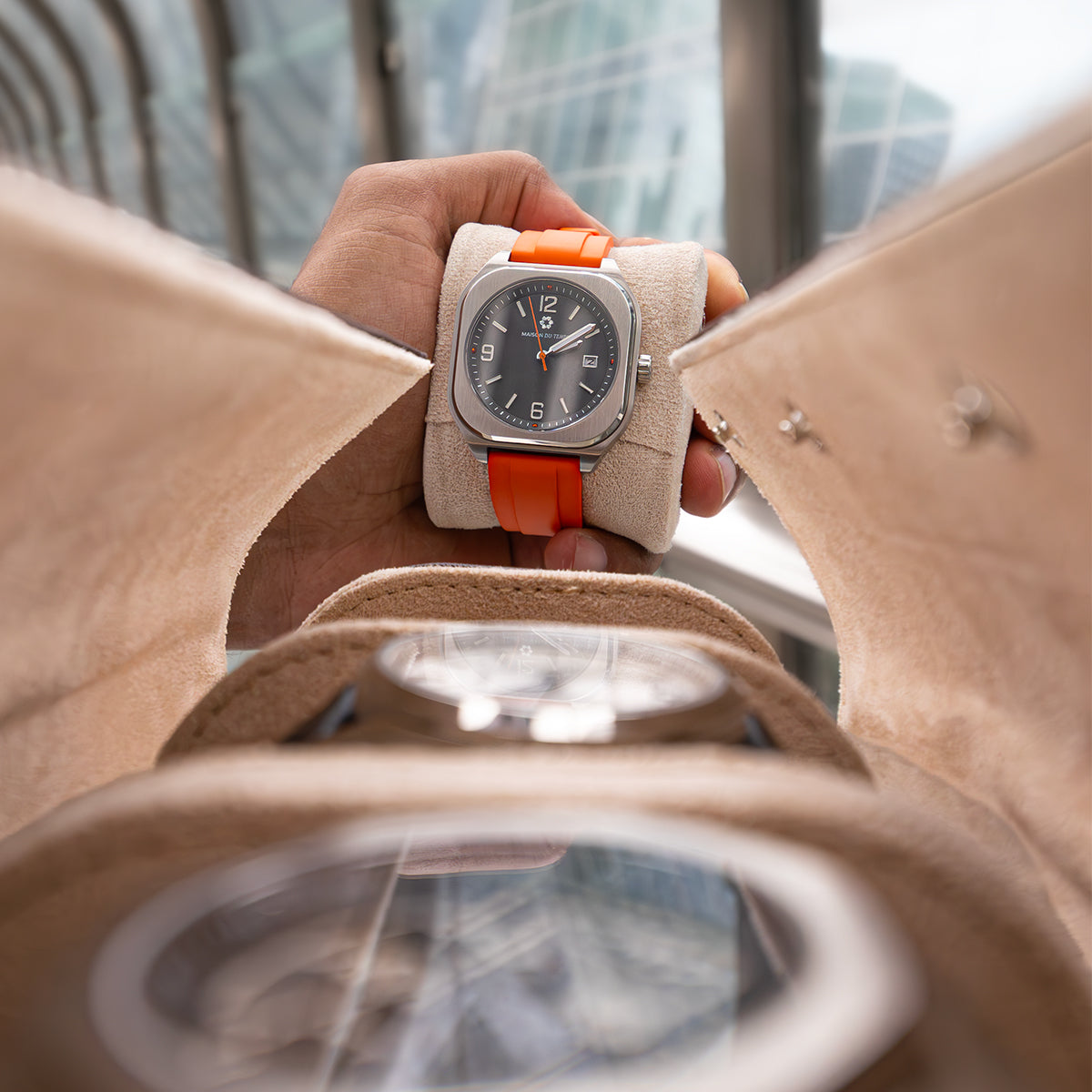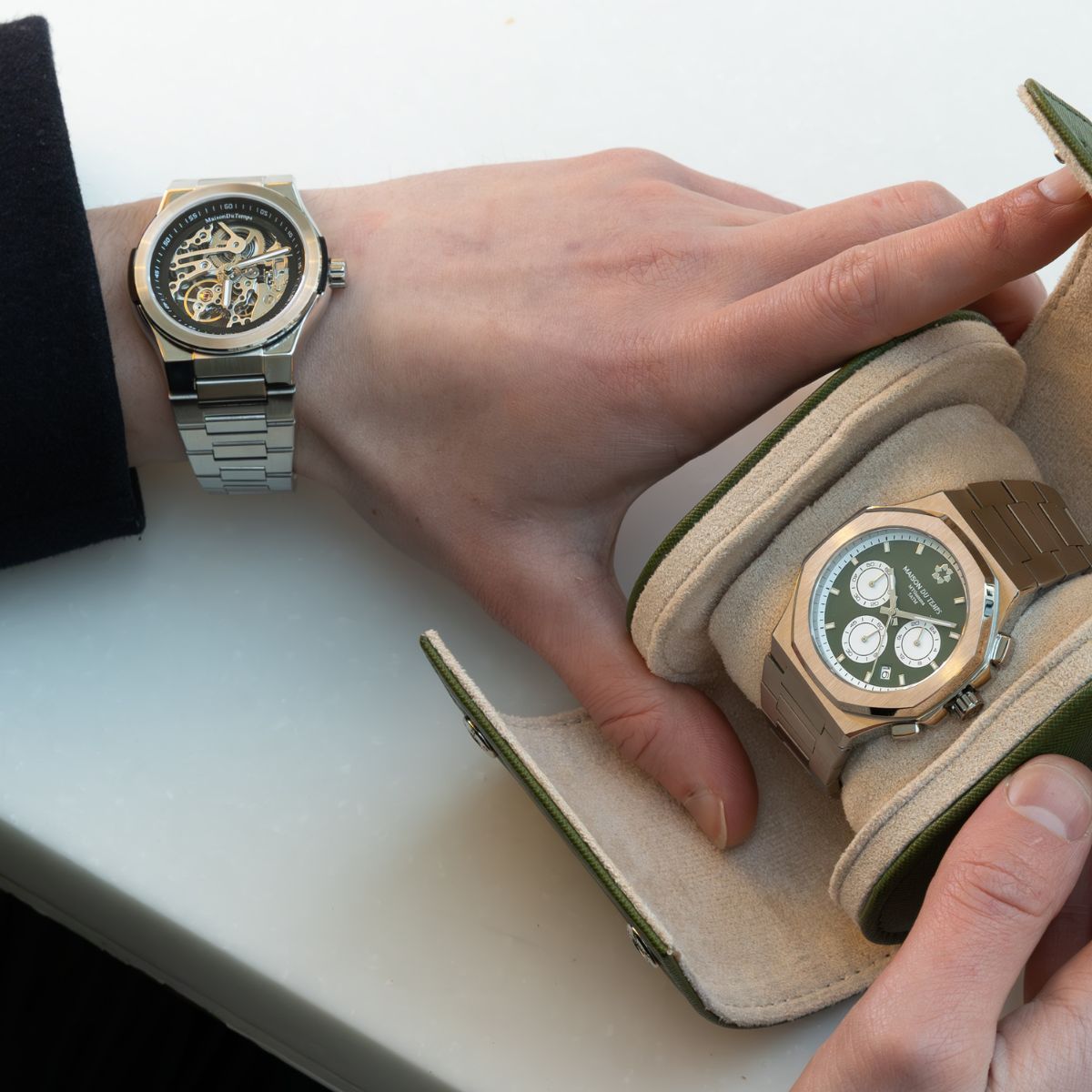Summary
The Historical Foundations of Arabic Numerals in Watchmaking
The Technical and Aesthetic Evolution of Watches with Arabic Numerals
The MaisonDuTemps MTZeta: The ultimate Arabic numeral watch
The Historical Foundations of Arabic Numerals in Watchmaking
Introduction and Diffusion of Arabic Numerals in Europe
The history of Arabic numerals in Europe is a fascinating saga of cultural transmission and innovation. These figures, originating from the Arab world, were introduced to Europe around the 10th century. Their adoption marked a decisive turning point, particularly in the field of watchmaking. Before this period, clocks and watches primarily used Roman numerals , which, although stylistically distinct, had some limitations in terms of readability and simplicity. The introduction of Arabic numerals not only improved accuracy in time measurement but also paved the way for more advanced and precise watch designs, thereby facilitating the creation of more complex and functional watches and clocks.
Impact of Arabic Numerals on Watch Design
Arabic numerals have revolutionized watch design, bringing a touch of modernity and functionality. Their clear shape and ease of reading have allowed watchmakers to design dials that not only display the time more legibly, but are also aesthetically pleasing. This transition opened the door to a diversity of styles, allowing watch designers to express themselves through a variety of designs ranging from modern minimalism to ornate luxury. Arabic numeral watches have become synonymous with modernity, providing an ideal backdrop for innovation and creative expression in the art of timekeeping.
The First Watches with Arabic Numerals and Their Meaning
The first watches to incorporate Arabic numerals marked an important milestone in the history of watchmaking. These watches were not just instruments for measuring time; they were symbols of progress and openness to new ideas and techniques. By adopting Arabic numerals , watchmakers have demonstrated their willingness to embrace change and innovate. These early watches laid the foundation for what would become a standard feature in watchmaking, profoundly influencing the development and design of watches in the following centuries.
The Technical and Aesthetic Evolution of Watches with Arabic Numerals
Mechanical Advances and Innovations
Arabic numeral watches have benefited from a series of technical innovations over the centuries. Advances in watch mechanics, such as the introduction of more precise movements and the miniaturization of components, have made it possible to create more reliable and precise watches . These advances were crucial to the development of watches capable of measuring time with unprecedented accuracy. In addition, the integration of new technologies and materials has made it possible to produce watches that are not only more efficient , but also more resistant and suitable for a variety of conditions of use.
Diversity of Styles and Cultural Impact
The diversity of Arabic numeral watch styles reflects their cultural impact and adaptability to changing fashion and design trends. From classic and elegant models to avant-garde and bold creations, Arabic numeral watches have spanned different eras, adapting and evolving with the times . This ability to reinvent itself has allowed Arabic numeral watches to remain relevant and popular, reflecting the tastes and preferences of a diverse and demanding clientele.
Arabic Numeral Watches in the Modern Era
In the modern era, watches with Arabic numerals continue to play a leading role in watchmaking. They combine cutting-edge technologies with innovative designs, while remaining true to their rich heritage. Modern watches with Arabic numerals, such as the MTZeta from MaisonDuTemps, illustrate this fusion between tradition and innovation. They embody the evolution of watchmaking, where respect for the past is combined with a vision focused on the future.
The MaisonDuTemps MTZeta: The ultimate Arabic numeral watch
Innovative Design and Unique Features
The MaisonDuTemps MTZeta is a perfect embodiment of how Arabic numeral watches can be reinterpreted in a modern context. Its design, which combines elegance and functionality, is the result of careful consideration of how watchmaking tradition can be merged with contemporary elements. The watch features a clear and readable dial , adorned with stylized Arabic numerals, which not only makes it easier to read the time but also adds a touch of modern elegance . The materials used, such as stainless steel for the case and sapphire crystal for the dial, are chosen for their durability and aesthetics , reflecting MaisonDuTemps' commitment to quality and design.
Exceptional Precision and Reliability
Precision and reliability are at the heart of the MaisonDuTemps MTZeta . Equipped with a Miyota 8215 movement , recognized for its precision and durability, the watch guarantees accurate and reliable time measurement. This attention to movement quality is a testament to MaisonDuTemps' commitment to providing watches that are not only beautiful to look at, but also exceptional to use. Each component is carefully selected and assembled to ensure that the watch functions flawlessly, providing users with a premium watch experience.
Customization and Adaptability
The MTZeta stands out for its ability to adapt to individual tastes and needs. With customization options such as choosing between different watch faces , the watch allows users to tailor it to their personal style. Whether for everyday use or for special occasions, the MTZeta offers flexibility and adaptability that is essential in the world of modern watchmaking. This approach to personalization highlights the importance of individuality in watch design, allowing each wearer to create a piece that is truly their own .
FAQ about Arabic Numeral Watches
What is the main difference between Arabic and Roman numerals in watches?
Arabic numerals, with their simple, linear design, offer superior readability and a more modern style compared to Roman numerals. Roman numerals, on the other hand, are often associated with more classic and traditional designs. This aesthetic difference influences not only the appearance of the watches but also their readability and functionality.
Are Arabic numeral watches more accurate than other types of watches?
The accuracy of a watch is primarily determined by its internal mechanism and not by the style of its numerals. However, Arabic numerals, due to their clarity, can make it easier to read the time accurately, especially in low light conditions or for people with vision difficulties. So, although the numbers themselves do not influence the mechanical accuracy of the watch, they can improve the user experience in terms of readability.
How to maintain an Arabic numeral watch to ensure its longevity?
To maintain an Arabic numeral watch in good condition, it is important to follow a few key steps. Firstly, regular cleaning with a soft cloth can help preserve the shine and prevent dirt build-up. It is also advisable to protect the watch against water and shock, even if it is waterproof, to preserve its internal mechanism. Finally, periodic service by a qualified watchmaker is essential to ensure that the watch is functioning properly and to make any necessary repairs or adjustments. By following these tips, you can extend the life of your watch and ensure it functions well for many years.













